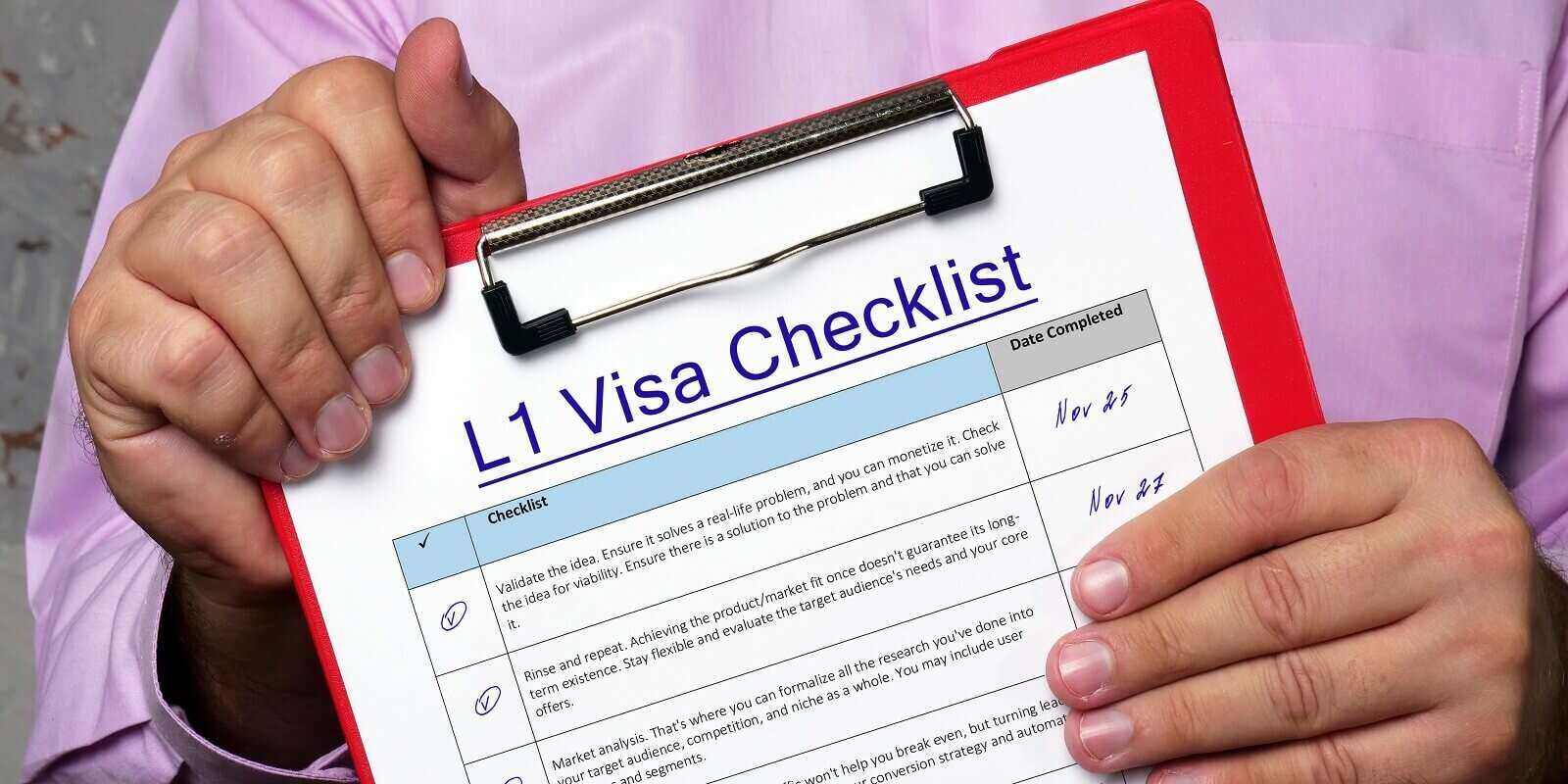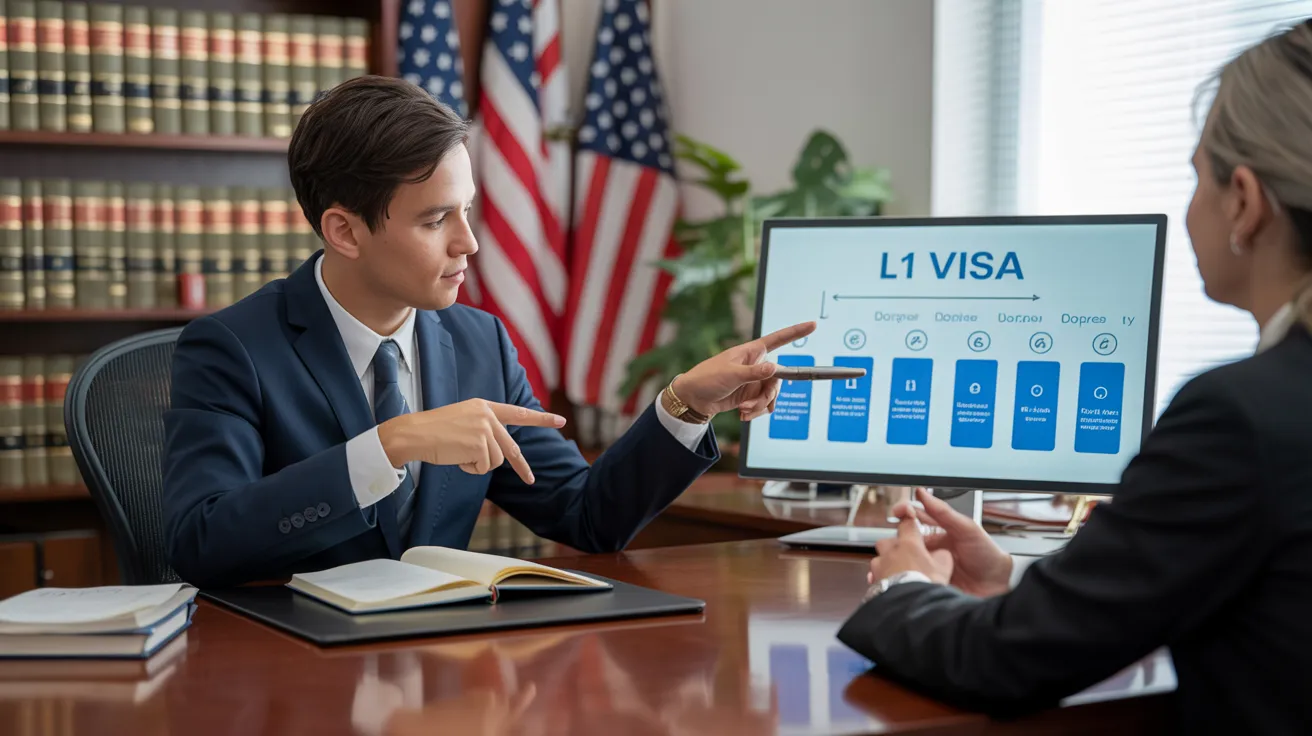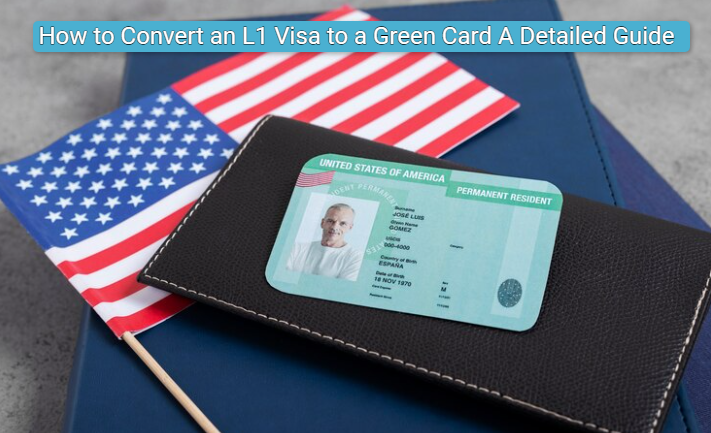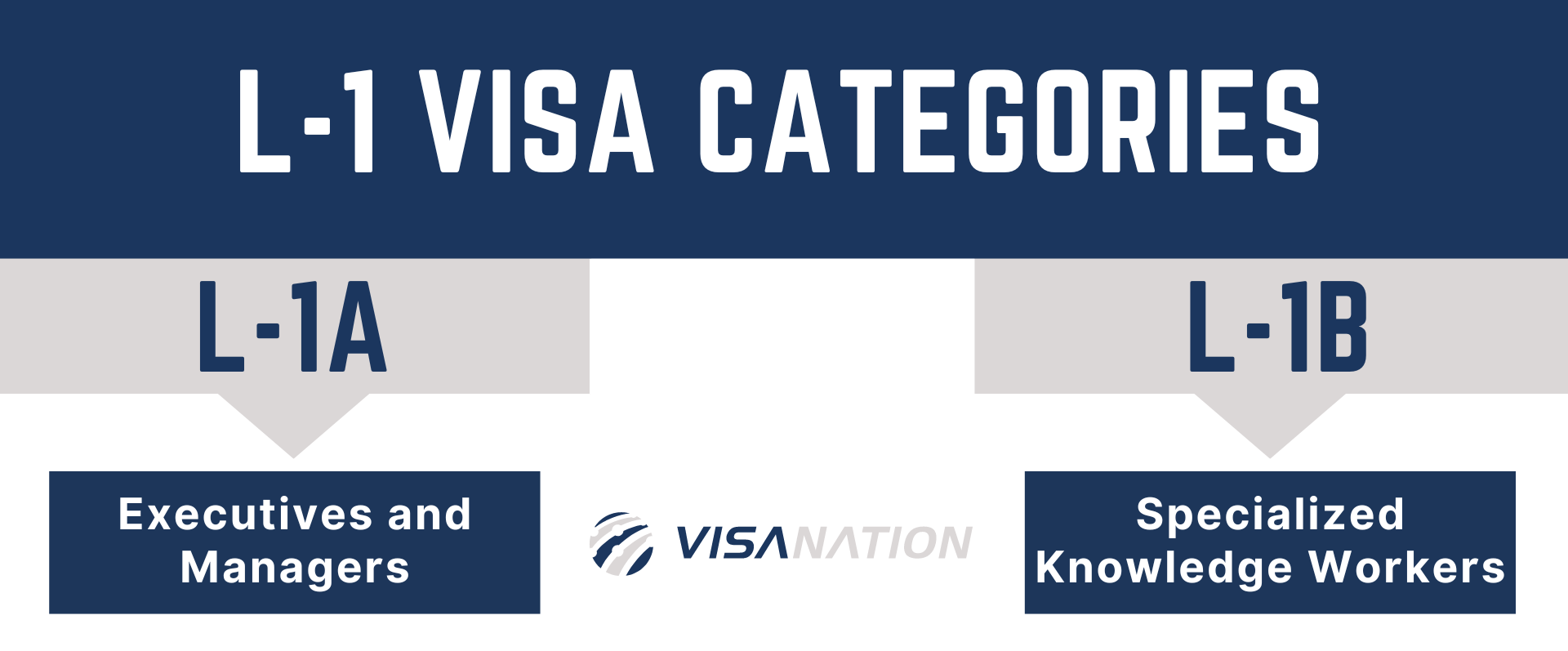L1 Visa Attorney Support
Wiki Article
Opening Opportunities: A Comprehensive Overview to the L1 Visa Process
The L1 visa process offers an important path for international firms looking for to transfer key workers throughout borders. Comprehending the subtleties of qualification criteria, the distinctions between L-1A and L-1B visas, and the details of the application process can substantially influence an applicant's success. Steering this complicated landscape is not without its challenges, and cautious attention to documents and company sponsorship is important. As we explore the crucial parts of this process, the techniques for getting rid of prospective challenges will certainly end up being apparent, revealing exactly how notified preparation can open a globe of chances.Recognizing the L1 Visa
Comprehending the L1 visa requires acknowledging its significance as a vital tool for international business looking for to transfer knowledgeable employees between international offices. This non-immigrant visa classification promotes the motion of execs, managers, and specialized understanding employees to the USA, consequently making it possible for organizations to keep operational continuity and harness worldwide ability effectively. The L1 visa is split into 2 primary classifications: L-1A for supervisors and execs, and L-1B for employees having specialized knowledge.The L1 visa serves a vital role in improving a firm's affordable side in the global industry - L1 Visa Requirements. By enabling firms to transfer their key workers, businesses can assure that vital tasks are taken care of by qualified individuals that are currently aware of the company's society and functional procedures. This inner transfer device not just cultivates understanding sharing yet likewise promotes innovation and cooperation across borders.Moreover, the L1 visa is often preferred for its fairly simple application procedure contrasted to other visa classifications, as it enables twin intent, allowing owners to pursue permanent residency while on a short-term job visa. This function makes the L1 visa specifically appealing for both companies and staff members, as it simplifies the path for competent specialists to develop long-term residency in the United StatesQualification Criteria
Qualification for the L1 visa rests on numerous essential standards that guarantee both the employee and the employer meet certain certifications. This non-immigrant visa is designed for multinational business to transfer staff members from consular services to united state counterparts.Firstly, the company should be a certifying organization, which includes a moms and dad business, branch, associate, or subsidiary of a united state service. The business should have been doing service for a minimum of one year both in the U.S. and abroad. This ensures that the company has enough functional stability and a legit presence.Secondly, the employee must hold a supervisory, exec, or specialized expertise placement. For L1A visas, the applicant has to demonstrate supervisory or executive credentials, while L1B visas concentrate on specialized expertise associated to the organization's products, solutions, or processes. In addition, the employee needs to have worked for the foreign entity for at least one continual year within the last 3 years prior to their application.Lastly, the worker's function in the U.S. should line up with their previous position, making sure that their skills and experience are leveraged for the business's advantage.Kinds of L1 Visas
The L1 visa classification comprises two key types created to facilitate the transfer of workers within international business: the L1A visa for supervisors and executives, and the L1B visa for workers with specialized understanding. Each type serves distinct functions and has specific eligibility criteria.The L1A visa is tailored for people who hold managerial or executive placements within a business. This visa enables top-level employees to transfer to a united state branch, subsidiary, or associate of the very same company. Applicants for the L1A visa have to demonstrate that they have been utilized in a supervisory or executive capability for at the very least one continuous year within the past 3 years before their application. Additionally, this visa provides a longer duration of remain, at first granted for three years, with the possibility of extensions for approximately 7 years.In comparison, the L1B visa is planned for experts with specialized knowledge associated to the firm's items, solutions, or procedures. To certify, candidates should verify that their knowledge is important to the company and that they have benefited at the very least one constant year within the last three years in a function that required this specialized understanding. The L1B visa is at first approved for three years, with extensions readily available for approximately 5 years.Both visa kinds are essential for firms looking for to boost their international operations by leveraging experienced personnel, thus promoting innovation and effectiveness within the united state market.Application Process
Guiding with the L1 copyright process entails a number of crucial actions that need to be meticulously followed to ensure an effective outcome. The procedure begins with the U.S. employer, who should initially develop qualification by showing a qualifying relationship with the international entity and validating that the staff member fulfills the certain needs for the L1 visa classification being sought.Once eligibility is confirmed, the company initiates the process by submitting Form I-129, the Petition for a Nonimmigrant Employee, with the U.S. Citizenship and Migration Services (USCIS) This type has to be gone along with by a comprehensive summary of the job responsibilities to be performed, the business structure of both the U.S. and foreign entities, and the employee's credentials. It's important to confirm that all info is accurate and total, as omissions or mistakes can result in delays or denials.Upon authorization of the I-129 petition, the next step includes the worker using for the L1 visa at a united state embassy or consular office in their home country. This stage needs the completion of Form DS-160, the Online Nonimmigrant copyright, and setting up an interview. Throughout the interview, the candidate must present proof sustaining their certifications and the company's petition.After the visa is given, the staff member can enter the United States to operate in the assigned duty. Generally, careful preparation and adherence to each action of the application process are necessary for an effective L1 visa outcome.Called for Documentation

Necessary Kinds Required
Navigating the L1 Visa procedure calls for cautious interest to the vital forms and documents required for an effective application. The key type required is the Form I-129, Petition for a Nonimmigrant Worker, which need to be completed and sent by the united state employer. This kind describes the details of the employment deal and the certifications of the staff member seeking the L1 Visa.Alongside Type I-129, the applicant will require to complete Type I-539 if coming with relative are also getting visas. In addition, the employer has to supply proof of the qualifying connection in between the united state entity and the foreign entity, frequently demanding the entry of company papers such as write-ups of consolidation or economic statements.Moreover, it is important to consist of the L Category Supplement to Kind I-129, which defines the sort of L Visa being asked for-- either L-1A for managers and executives or L-1B for learn more employees with specialized expertise. Finally, applicants ought to ensure that all forms are authorized and dated properly, as incomplete entries can result in hold-ups or denials. Appropriately assembling these vital forms lays the foundation for a smoother L1 copyright procedure.

Supporting Proof Needs
Sustaining paperwork is necessary for an effective L1 copyright, as it corroborates the insurance claims made in the request. Applicants need to offer a series of records to show qualification for the visa, which is categorized right into two main types: evidence of the certifying connection between the united state and international entities and evidence of the applicant's qualifications.To establish the connection, applicants need to send documentation such as company business graphes, monetary statements, and proof of ownership. These records confirm that the international firm has a certifying connection with the U.S. company, whether as a moms and dad firm, subsidiary, branch, or affiliate.For the candidate's credentials, essential records include a comprehensive employment letter from the international employer, detailing the applicant's job title, obligations, and duration of work. Furthermore, educational qualifications, such as degrees and diplomas, ought to be offered to confirm the applicant's experience in the appropriate area.Employer Sponsorship Papers

Common Difficulties
Maneuvering the L1 visa process presents numerous usual obstacles that applicants should understand. Key issues frequently include rigid documentation needs, prospective hold-ups in processing times, and the necessity for rigorous lawful conformity. Recognizing these obstacles can assist candidates much better prepare and minimize risks throughout their copyright trip.Documentation Demands
The L1 copyright procedure commonly presents significant difficulties connected to paperwork demands. Candidates should offer comprehensive documentation to establish qualification, which can bring about complication and potential delays. Secret records include proof of a qualifying partnership in between the U.S. and foreign employer, evidence of the candidate's work history, and comprehensive details regarding the work function in the U.S.One common difficulty is collecting sufficient evidence to demonstrate the nature of the qualifying partnership. Firms commonly battle to existing clear business graphes or financial statements that illustrate the link between the entities. In addition, guaranteeing that letters of support from employers precisely reflect the applicant's task responsibilities and credentials is essential, as vague summaries can lead to denials.Another concern develops from the need for detailed work descriptions that straighten with the L1 visa groups. Applicants should express not only their existing function yet likewise their managerial or specialized knowledge duties plainly. This requires an extensive understanding of both the applicant's setting and the regulative language utilized in L1 applications.Handling Time Hold-ups
Experiencing hold-ups in processing times is a common challenge dealt with by L1 visa candidates, typically resulting in irritation and unpredictability. Several factors contribute to these hold-ups, consisting of high application quantities, raised scrutiny of applications, and administrative stockpiles within the united state Citizenship and Immigration Solutions (USCIS) Candidates may discover that processing times can differ greatly depending upon the solution facility managing their application, as each center has its own workload and efficiency degrees. Additionally, the intricacy of the candidate's situation, such as the demand for substantial paperwork or information, can further expand wait times.In some circumstances, problems related to the applicant's current migration status or previous visa history might also bring about extra hold-ups, as USCIS might need additional evaluation or information. It is crucial for candidates to continue to be proactive throughout this duration, keeping open communication with their companies and lawful reps to attend to any kind of potential problems promptly.Understanding these handling time obstacles can aid L1 visa candidates get ready for feasible delays and mitigate the influence on their shift and career strategies. Persistence and diligence are vital merits in maneuvering this complex process.Legal Compliance Issues
Numerous L1 visa candidates come across legal compliance problems that can complicate their trip towards getting the visa. Recognizing and adhering to the specific policies established by the united state Citizenship and Migration Provider (USCIS) is crucial. Usual obstacles consist of showing the qualifying partnership between the foreign and U.S. companies, in addition to confirming that the candidate possesses the requisite customized understanding or supervisory capacity.Additionally, candidates should offer detailed paperwork outlining their task duties, company framework, and economic stability of the united state entity. Insufficient or imprecise documents can result in delays or perhaps rejections. Employers must likewise guarantee that they abide with labor regulations, consisting of wage and functioning condition criteria, which can affect visa eligibility.Another typical problem entails maintaining compliance with the regards to the visa once provided. Changes in employment status, job obligations, or business structure can demand amendments to the visa, which if not resolved without delay can lead to legal difficulties. Because of this, remaining notified about conformity needs and looking for lawful advise when needed is necessary to navigate the intricacies of the L1 visa process successfully.Tips for Success
Success in the L1 copyright process typically hinges on thorough prep work and attention to detail. To boost your chances of approval, start by thoroughly recognizing the eligibility needs for both the L1A and L1B visa groups. Review whether your placement at the business certifies as supervisory, executive, or specialized expertise, as this classification especially affects your application.Next, collect considerable paperwork that validates your cases. This includes organizational charts, comprehensive job descriptions, and evidence of the company's operational structure. Clear and succinct evidence of the certifying partnership between the united state entity and the international entity is essential. Verify that all documents are arranged realistically and offered in a professional manner, as this mirrors your dedication and seriousness concerning the application.Engage the services of a seasoned immigration attorney who concentrates on L1 visas. Their know-how can confirm vital, guiding you through facility guidelines and guaranteeing that all documents follows existing regulations. Additionally, prepare for the meeting by exercising response to usual inquiries and preparing to review your role and contributions to the business in deepness.Often Asked Inquiries
Can Family Members Accompany the L1 Visa Owner?
Yes, relative of L1 visa owners, consisting of partners and unmarried kids under 21, can accompany the main visa holder. They may additionally request L2 visas, which enable them to stay in the USA.Just How Long Can I Keep on an L1 Visa?
The L1 visa permits preliminary remains of up to three years, with the opportunity of extension. L1A visa owners may stay for a maximum of 7 years, while L1B visa owners can continue to be for five years.Can L1 Visa Owners Look For a Permit?
Yes, L1 visa owners can make an application for an eco-friendly card. L1 Visa Requirements. They might seek long-term residency through employment-based classifications, typically calling for sponsorship from their employer, offered they meet the essential certifications and paperwork requirementsWhat Takes place if My L1 copyright Is Rejected?
If your L1 copyright is refuted, you might obtain a notice describing the reasons for denial. You can seek to appeal the choice, reapply, or discover different visa options based upon your conditions.Exist Any Traveling Constraints With an L1 Visa?
An L1 visa usually permits global travel; however, re-entry to the U. L1 Visa Requirements.S. is contingent upon maintaining legitimate condition. Travelers must guarantee compliance with visa conditions to stay clear of issues upon returnFinal thought

Report this wiki page